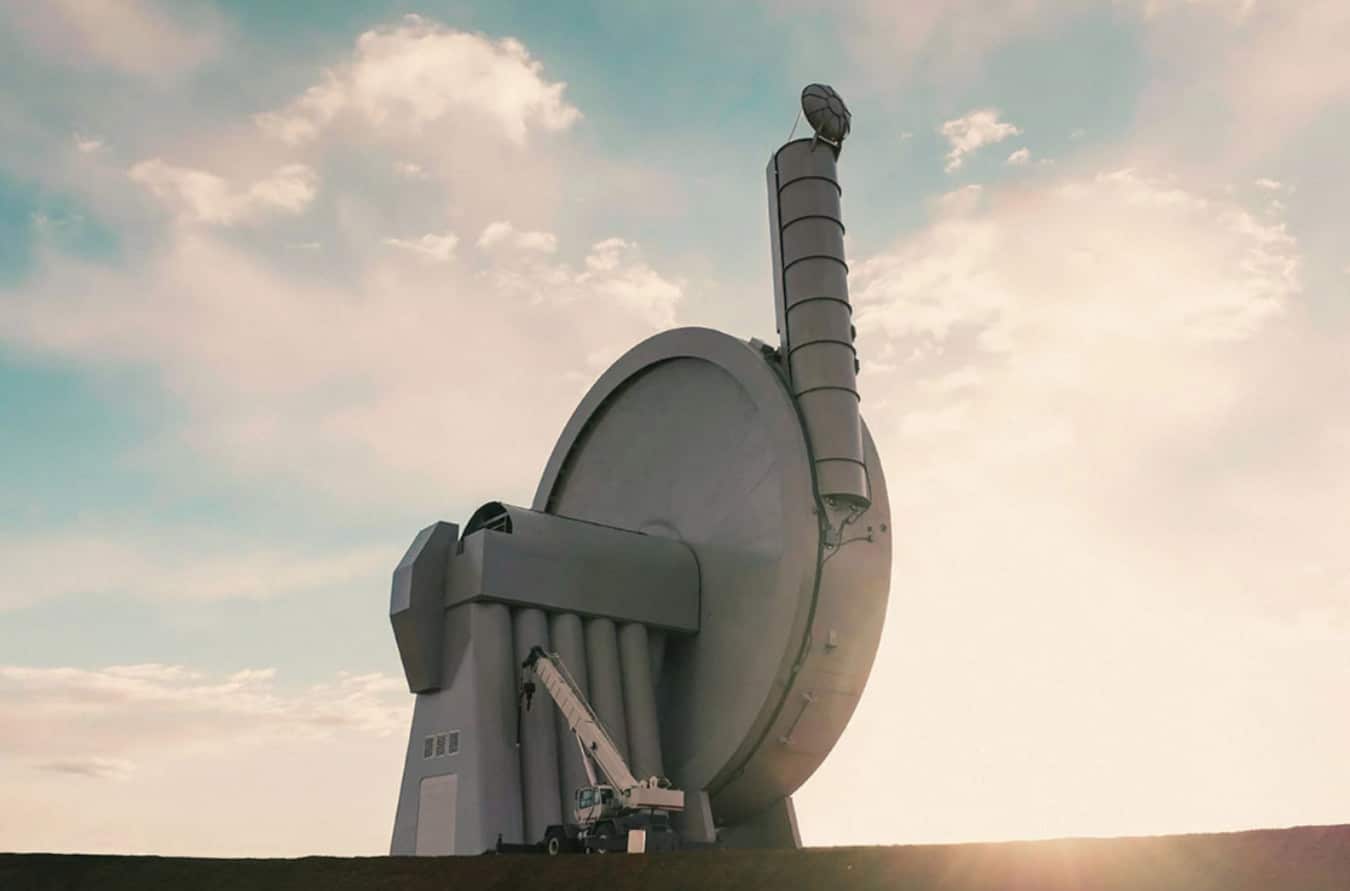
A few months ago, we introduced you an extraordinary new satellite launch system developed by the start-up SpinLaunch: a system based on a huge electric centrifuge that can accelerate to hypersonic speeds (up to 8000 km/h) before launching the machine into orbit. The main advantage of this approach is that it is possible to dispense with the booster rockets used by most aerospace companies today. Several industry players are interested in this concept, including NASA, which has signed up to test this incredible technology.
One of SpinLaunch’s drivers is ecological: ” With the industry planning to launch ten times as many satellites in the next decade, the need to develop eco-friendly space access technology is more urgent than ever. “, precisely the company’s official website† And this doesn’t just apply to satellites: While humans plan to settle permanently on the moon, hundreds of launches of equipment and supplies are expected in the coming years. And this rocket-less kinetic launch system, that is, without the emission of harmful gases, promises “greener” flights.
The other great thing about this giant centrifuge is that it significantly reduces launch costs, especially fuel costs. While a standard launch would require an investment of $5 million to $100 million, a spinner launch would cost less than $500,000 according to SpinLaunch founder Jonathan Yaney. The very first tests, carried out on a small prototype, proved promising. Since then, SpinLaunch has regularly conducted suborbital launch tests at Spaceport America, New Mexico.
A “technically mature” launch approach
Inside the vacuum-sealed centrifuge, a huge rotating carbon fiber arm — to which the projectile is attached — accelerates to hypersonic speed, then releases the object in a split second. Tests have shown that this system can catapult a charge into the air at a speed of more than 1600 km/h at an altitude of about 9 km. NASA seems convinced of this launch alternative, which is both more economical and environmentally friendly: It has just signed a Space Act agreement with the start-up to test the machine later this year.

 100vw, 1000px”/>
</picture>
</noscript><figcaption id=) Artist’s impression of the SpinLaunch system, tilted to orbit. © SpinLaunch
Artist’s impression of the SpinLaunch system, tilted to orbit. © SpinLaunchThis test flight “will provide valuable information to NASA for future commercial launch opportunities,” SpinLaunch representatives said. on Space.com† The agency plans to launch a payload at about Mach 2 (twice the speed of sound), in a ten-foot vehicle; once he has reached the desired height, it will deploy a parachute that will allow it to land softly. The payload is designed to take a series of measurements, which are then analyzed by both parties.
† What started as an innovative idea to make space more accessible has grown into a technically mature and groundbreaking launch approach. Yaney said in a statement to Space.com. In practice, the vehicle propelled in this way will have to board a rocket engine, which will produce the ultimate thrust that will lead it to its destination; but this won’t ignite until you’re at a high altitude, greatly reducing the amount of fuel needed.
An acceleration equal to 10,000 G
This launching technique, which advantageously replaces the first stage of a rocket, thus makes it possible to spend most of the mass of the space vehicle on the payload, and no longer on the thrusters. The team estimates that the process will make it possible to divide the cost of putting small satellites into orbit by 20 and guarantee dozens of launches per day. † We look forward to announcing more partners and customers soon, and greatly appreciate NASA’s continued interest and support for SpinLaunch. ‘ said Jonathan Yaney.
The start-up is currently working on the design of satellites that are compatible with kinetic launch (implying that the machines and their components have to withstand an extreme acceleration of 10,000 G!). † We have developed a catalog of optimized subsystems and fully integrated turnkey solutions to provide lower costs and more scalable access to space the company says. In the catalog: the S-20 and the S-200, the first of which is optimized for rapid deployment of commercial satellite constellations, the second is designed for telecommunications and Earth observation.
It should be noted that the tests are currently being conducted on a smaller scale system, some 50 meters high. A SpinLaunch representative told TechCrunch that the company planned to conduct further tests later this year at speeds up to Mach 6. The 100-meter-tall final launch vehicle, designed to orbit the Earth, should be operational by 2025; the location of the installation has not yet been communicated. SpinLaunch says it can accommodate launchers weighing up to 200kg, which carry mostly satellites.
A video showing how the operations will take place:



